Customer Journey Mapping: A Complete Guide for Designers
According to the Digital Trend 2015 Report, customer experience is crucial to stand out from competitors. Suppose there is a single type of data to identify the success of the design outcome. In that case, I will choose the customer experience, it is the crucial element behind the design of any product or service to address customers’ needs and solve their problems. However, customer experience is more complex than we think. It involves several factors, such as satisfaction, education, and loyalty. Those factors can affect consumer experience through their journey while using any product or service, regardless of the nature of the delivery’s digital or physical evidence. Therefore, consumer journal mapping can help us to visually learn more about our consumers’ experience and visually map each of the customer touchpoints during their interaction with the product.
Several studies highlighted that attracting a new customer is 6X to 7X more expensive compared with the effort, time, and cost spent to keep the existing customer happy and engaged with the product or service, and one of the critical tools to achieve this goal is the customer journey maps, which we will explore and illustrate in more details its practical application.
What is Customer Experience?
But before digging into customer journey mapping. We need to understand the consumer experience, which refers to the experience the consumer gains as they interact with the product or service’s touch points. This experience involves human actors (e.g. consumers, employees and designers) and non-human actors (e.g. physical evidence and touchpoints). Customer experience extends through a timeline before, during and after using the product. To map and improve the consumer experience, we need to build a strategy based on collected data about the consumer experience, develop the product by considering this strategy, and finally track customer experience after applying this strategy. And to start this sequence, a clear understanding of consumer experience is required. This is where the consumer experience research comes in.
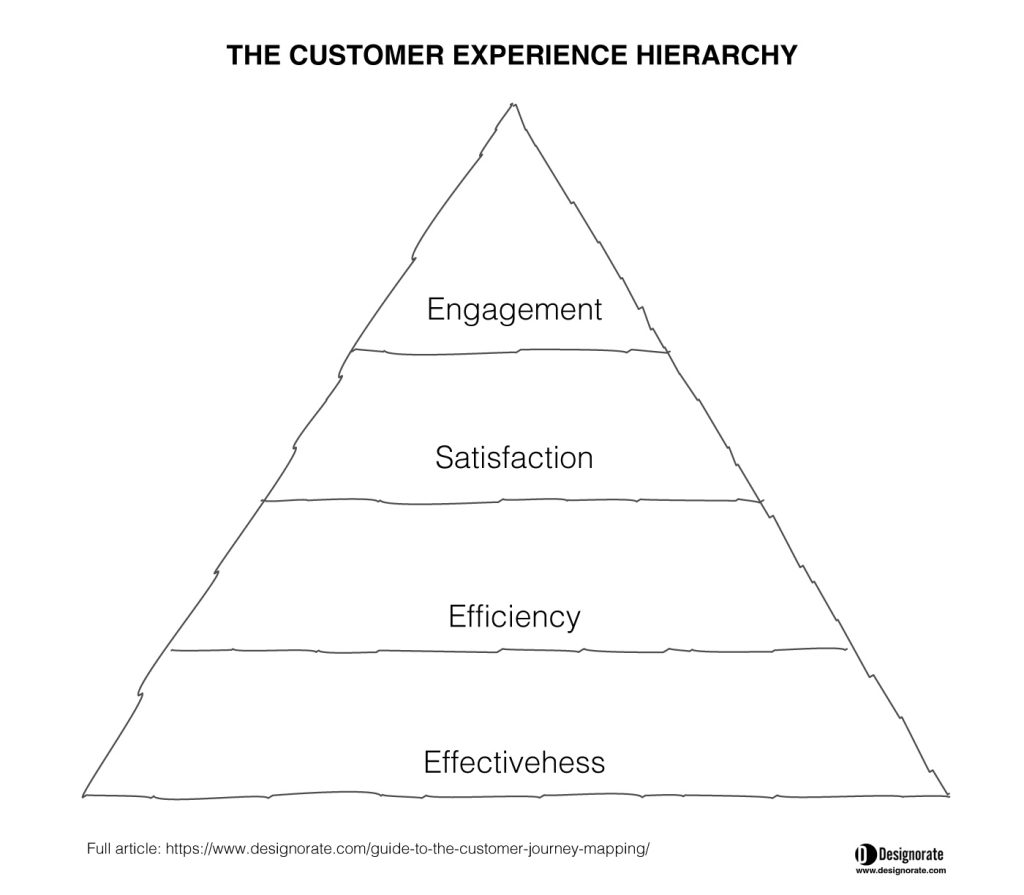
Customer experience research is an investigation and analysis of the consumer journey, the interaction between the consumers and the product or service to understand their experience, pain points (frustration), and satisfaction as they move from one step to another. The research also investigates the consumers’ behaviour, perception and practice through this journey. Several qualitative and quantitative tools can be used in consumer experience research, such as customer journey maps, interviews, questionnaires, observation, think-a-loud, user stories, and diary notes.
What is a Customer Journey Map?
The customer journey map (or a customer experience map) is a visual representation or diagram that tells the story of your consumers’ experience when using a product, system, or service, such as visiting a retail store. It helps us to build insight into consumers’ goals, customer expectations, the touch point with the product, and their emotions through this journey. Figure 2 shows the anatomy of the customer journey map and its main elements.
The customer journey map can be presented in different formats, including drawing on a whiteboard, digital diagrams, and infographics. These diagrams use other research methods to visualize and organize deep research for your customer’s experience. Customer journey mapping enables the use from:
- Exploring consumers’ experience as they interact with the system. The exploration helps us to decode the process into different elements.
- Identify the pain points and the problems in the system associated with each step in the journey.
- Identify the opportunities to innovate by improving the consumer experience.
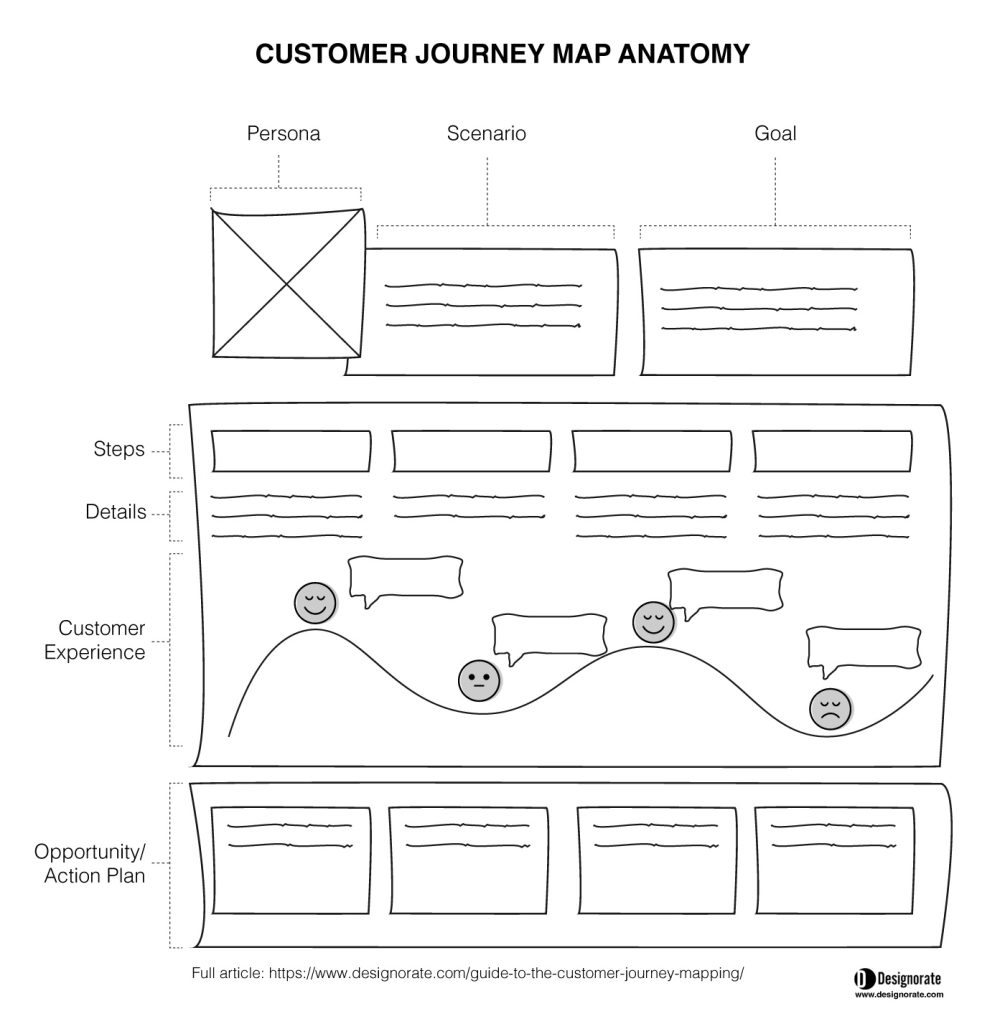
We seek to collect information about the consumer experience during the customer journey mapping. While each customer journey map can include different data based on the consumer experience that needs to be investigated, there are common data essential in each journey map, such as:
- Behaviour – This part answers the consumer’s actions in each journey step.
- Attitude – What the customers” feel and say about their interaction with the system.
- Experience – There are two parts to the experience. The first part is the on-stage experience, such as what the customers experience as they interact with the system. The second part is the unidentified experience or needs that the consumers may not be aware of. as I discussed earlier in The Double Diamond Design Thinking Process and How to Use it.
The Importance of the Customer Journey Mapping
The human-centred design focuses on customer needs and experience to drive innovation and customer retention, which can only be achieved with a deep understanding of the customer experience. Therefore, customer journey maps are a powerful tool for designers and companies to reach a consumer-centric product. The customer journey mapping can drive the below benefits for the product or service:
- Build a shared understanding of the customer’s behaviour and experience when using the product or service.
- Learn how customers use the product or service based on real-life examples.
- Identify the pain point that causes a bad emotional experience for the customers.
- Reduce or eliminate the negative factors that affect the customer experience.
- Identify the communication problems customers face when interacting with the touchpoints, such as the application interface, help desks, or customer support service.
- Build key performance indicators (KPIs) that can be used to evaluate the product to collect feedback to improve the future version.
Types of the Customer Journey Maps
As highlighted earlier, customer journey mapping is based on what information we need to collect from customers. Therefore, the different types of customer journey maps are based on the aim of conducting customer experience research. Generally, there are four types as following:
Current state customer journey maps
This is considered the most commonly used customer journey maps as it involves exploring the customer’s experience with a current offering by the company. It aims to explore the customer experience as they use this product or service, such as booking a flight or making a doctor’s appointment.
Day in the life customer journey maps
This map explores customers’ experiences as they go through specific daily experiences. By mapping this experience, we can identify the opportunity we can provide customers to solve their problems and address their needs.
Future state customer journey maps
Like the Day in Life map, the Future State map helps us find opportunities by envisaging customers’ experiences. Although this map starts with assumptions and previous experience, it is helpful as a starting point to build a testable experience for consumers.
Service Blueprint
Unlike the above journey maps, the service blueprint aims to map the different steps in the service and how it is linked to the company structure, such as employees, resources, and overall strategy.
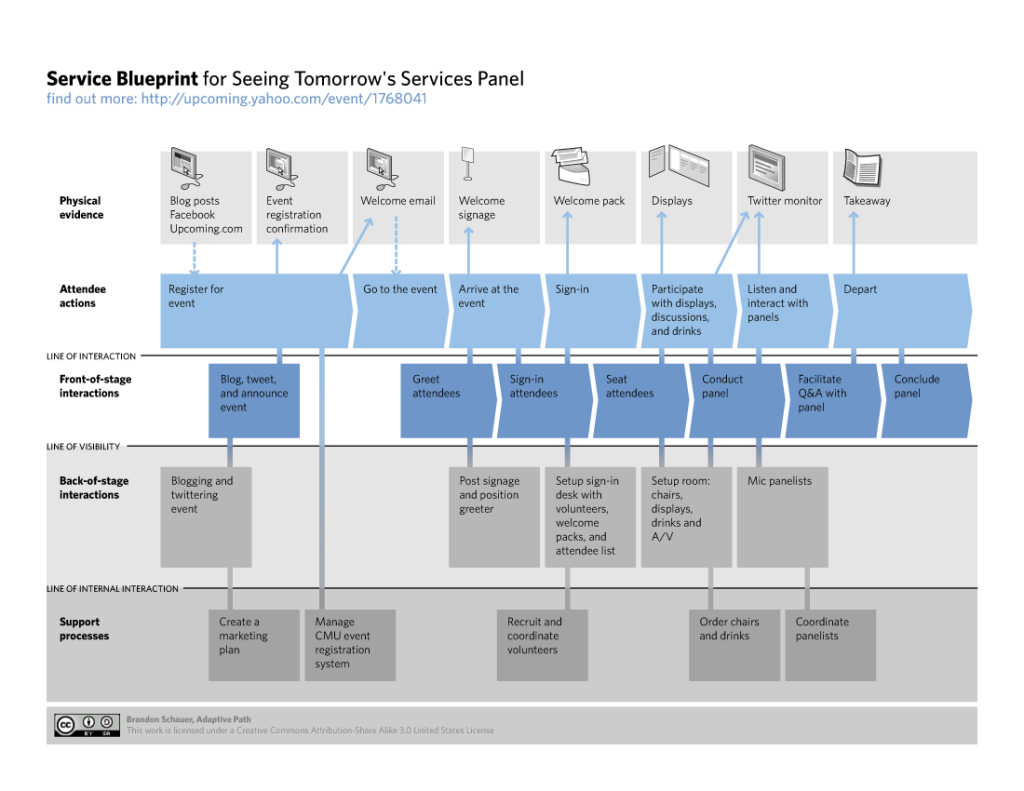
Defining the Customer Persona (buyer persona)
Building the customer journey map requires deeply understanding of customers’ personalities and experiences. Customers’ character has an essential impact on their purchase behaviour, experience and achieving customer loyalty. To understand this nature, we need to have a representation of the target customer. Personas are fictional characters that represent our target customers. It includes the customer’s demographic information, financial information, goals, purchase preferences, and experience. Personas can be visualized using illustrations, sketches or any persona template applications such as UX Pressia.
Persona isn’t static but constantly refined throughout the project, especially when conducting our research to identify the target audience’s characteristics. Once our market research is completed, we have precise details about our persona. Usually, products and services target more than one target audience in a multi-segmentation structure to increase the market reach and return on investment. In this case, we usually have more than one persona. The primary persona is the main persona we target while designing the product, and secondary personas that can also be considered in the design process.
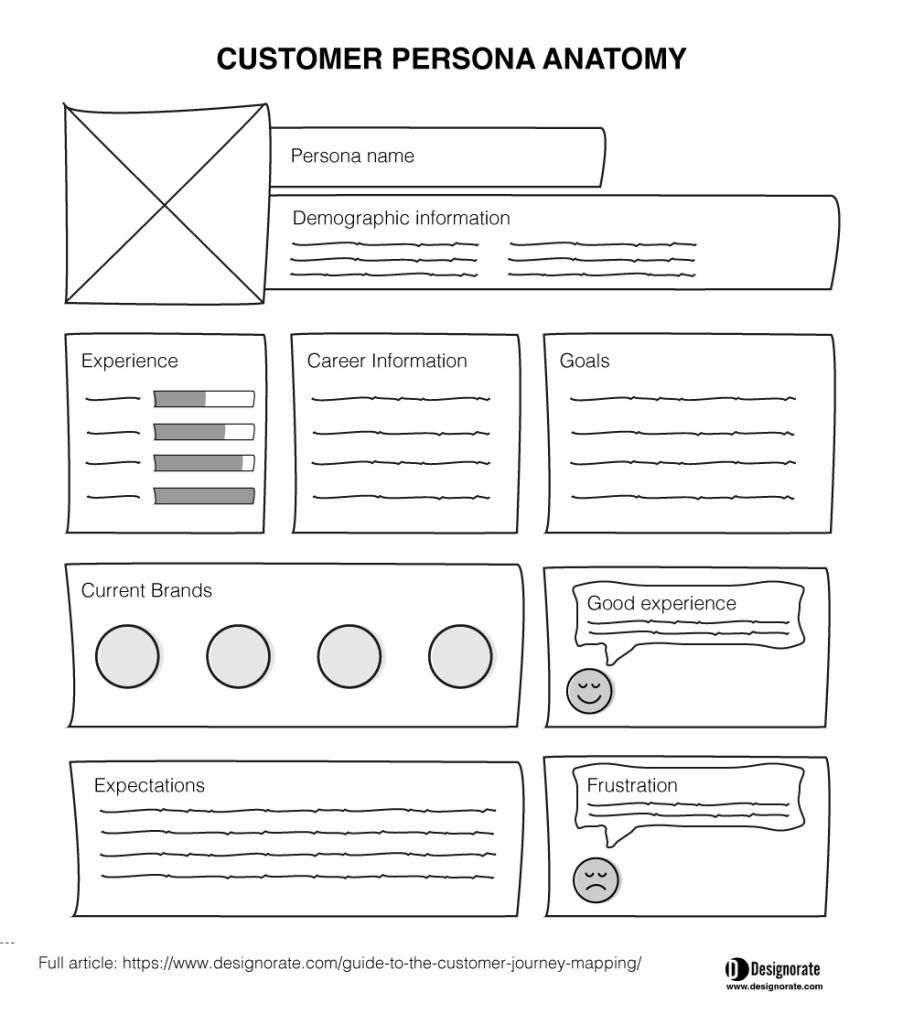
Types of Personas
There are several ways to categorize personas according to our target of the categorization, such as the persona target or emotional status that affects its purchase behaviour. In terms of the target, personas can be categorized into four types:
- Goal-oriented Persona – In this persona type, the target customer aims to achieve a specific goal when interacting with the system. The aim of creating the persona is to identify the customer’s goals and how this affects the process and the interaction with the different elements in the system.
- Role-Based Persona – This type is similar to the goal-oriented persona but focuses on the customer’s role while interacting with the system. This type of persona is data-driven based on qualitative and quantitative data. The customer role while interacting with the system is the core focus of this persona and the data collected to represent it.
- Engaging Persona – Unlike the above two types, the engaging persona focuses on interacting with the system. It examines customers’ emotional status, behaviour, psychology, and background. This persona aims to build empathy with the customer experience.
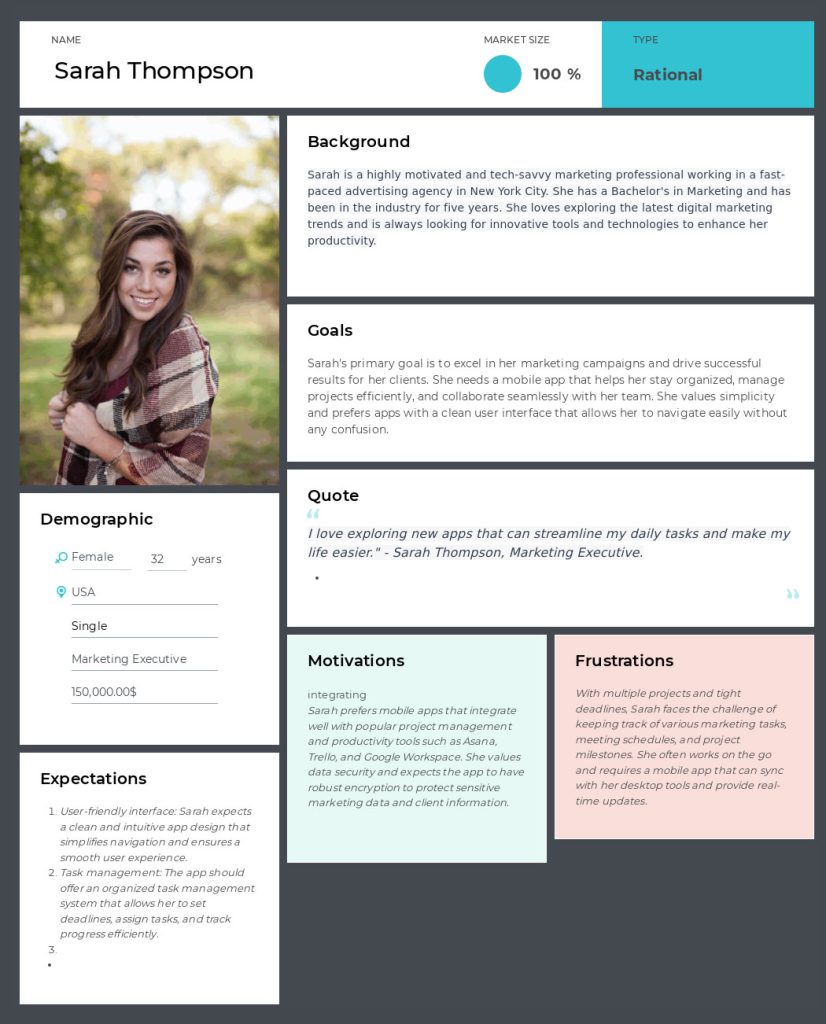
How to Create a Persona
As highlighted earlier, the persona is a dynamic tool that keeps changing as we build clarity about our customers. Even though customers’ behaviour may change, it requires optimizing the persona accordingly. To go through this journey to build and unstained your consumer through personas, the following general steps can help you develop this clarity.
- Define the focus customer (Proto-persona)
In the beginning, companies have different levels of understanding of their customers. Some companies need to learn about their customers, especially when developing a new service. On the other hand, some companies have a profound understanding of their customers. This previous experience helped us to develop the so-called proto-persona. It is not an accurate persona, but it helps as a standing point to start identifying the market sample and start the market or design research. - Conduct design research
I highlighted the design research, focusing on action research, reflection, customer experience, and qualitative data. Once we have the prototype persona, we start designing the research plan and the methodologies to start market research. Several methods could be used, either qualitative or quantitative. However, in design research, quantitative data is usually used to understand the qualitative nature of customer experience. - Data analysis
Once we collected and organized the data from the previous step. We analyze the data and try to understand the customer’s profile, experience, and behaviour. The narration and looking for themes help us to identify the holistic customer’s experience rather than looking for details. - Building the persona
Once we understand the customer experience, we must build the target customer’s detailed and accurate persona. Personas can be creative and represents the information visually to be easily recognized. Several tools can help us build creative persona layouts, such as UX Pressia,
How to Create a Customer Journey Map?
The customer journey map we need to create is based on the data we need to collect from the consumer as we conduct marketing research or user research if we would like to make a digital user journey map. Creating the customer journey maps follows the main critical thinking stages; understand, reflect, and implement. Based on this flow, the creation of the customer journey maps follows the below main three stages:
Stage 1: Understand (Research)
At this stage, the design and marketing teams work together to understand customer behaviour through deep research into their experience while using the product. Before starting the research, the team defines the key elements of the journey map. At this stage, a team is recruited to collect the data using different research methods, as described below.
Elements of the Consumer Journey Map
Before conducting the research, the consumer journey map should include the below main elements:
- Define the Persona
- First, we should define the customer persona as we highlighted earlier. We can also build persona empathy mapping, which allows the design team to understand the different feelings that visit the consumer while using the product or service. The personnel will represent the consumer sample used in the study.
- Define the Scenario
- The first step is to define the goal of conducting the consumer journey map. The scenario is usually a pathway of the consumer’s experience, such as buying a product from the store, booking a hotel room, or reaching technical support in a banking app.
- Define the Journey’s Stages
- Then, we define the steps that the consumer needs to take to achieve this goal. For example, in the below consumer journey map example, the personnel needs to go through several steps to book a travel ticket. So, she goes through several steps to achieve this scenario.
- Define the Data needed.
- As mentioned, most consumer journey maps collect consumer data about their behaviour, attitude and experience. But, more data could be collected, such as the touch point channels.
Several consumer journey mapping tools can be used to create the persona and consumer map, such as:
Collect Customer Feedback
The recruited sample starts with the scenario steps and experiences the product as normal. While the consumer is using the product already, this time, the aim is to understand their experience. The consumers can provide the data based on their previous experience with the product if the scenario is the same, and they can give feedback on each step in the scenario. Several methods could be used to collect data from participants in the consumer journey mapping. The qualitative research methods can help us gain a sentimental idea about the participant’s experience, and these methods can include:
Interviews can be either structured or semi-structured. In the structured interviews, we ask the participants predefined questions with no change in the questions during the interviews. We ask them predefined questions in the semi-structured interviews, but we can elaborate with other questions during the interviews.
Focus groups are a similar tool to interviews; the only problem is that participants may get influenced by the answers of others during the sessions.
Observation can be an excellent method to see the reaction during each consumer touch point. Still, it needs to detail the consumers’ experience and perception of the provided service.
Diary notes can be a good tool if the consumers record their experience during or after the interaction with the service. The problem with this tool is that it is not controlled, and there is no guidance while completing it. It is suitable for experienced participants who conduct the consumer journey map to evaluate the product or service.
On the other hand, the quantitive methods can be suitable to reach measurable but less sentimental data. The convenient quantitative way to use the consumer journey map is the survey. Different types of surveys can be helpful to get feedback from consumers, such as:
Customer Effort Score (CES): It measures the level of customer experience by assessing how effortlessly customers can interact with your product or service, address support problems, or access required information. The customers provide their effort ratings on a scale of 1 to 7.
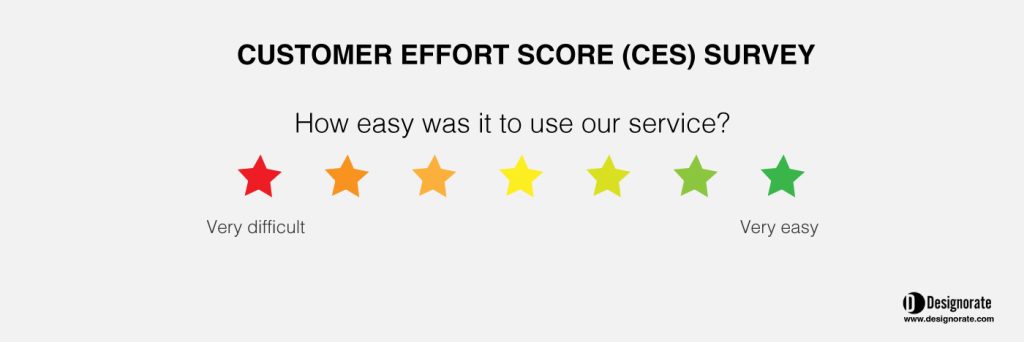
Net Promoter Score (NPS): The questionnaire is designed to predict whether a customer may use the service again. Therefore, it measures customers’ experience and satisfaction with the brand.
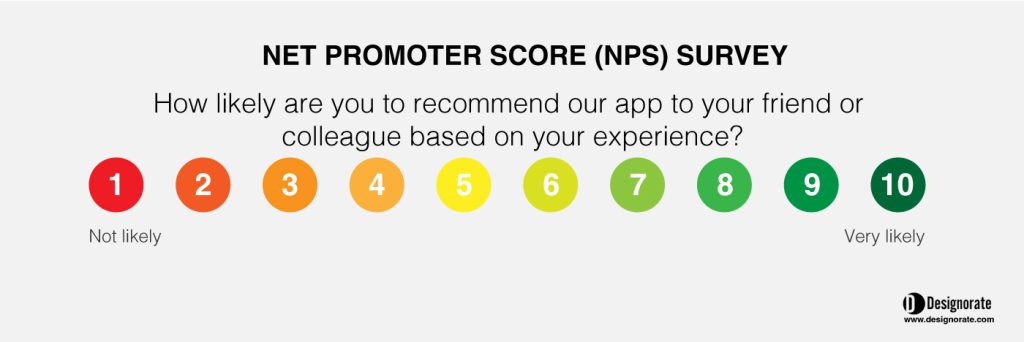
Customer Satisfaction Score (CSAT): It assesses the consumer’s experience based on one straightforward question, such as, “How satisfied were you with your experience?” The participants’ responses are based on a rank from 1 to 5 to measure their satisfaction.
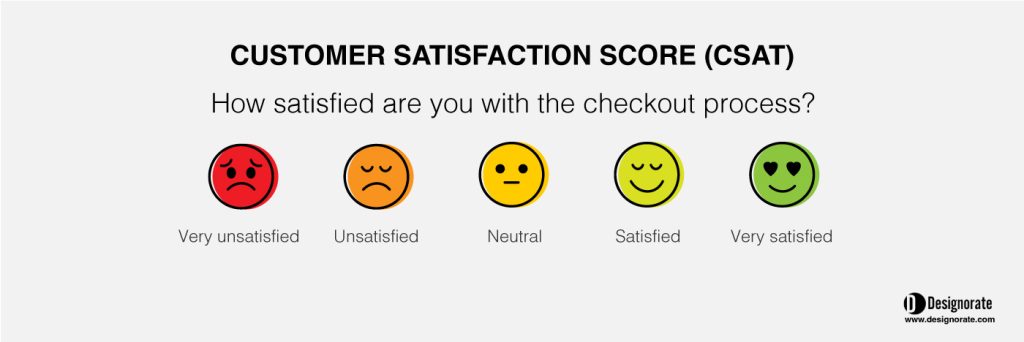
Stage 2: Reflect
Once we have the data collected, we start by analyzing it and identifying the pain points that face consumers through their journey. The results from the quantitative methods are more accessible to interpret than the qualitative data. To analyze data collected through qualitative methods, the thematic analysis is a coherent tool for understanding the emerged themes from the qualitative data analysis. Once we have the analyzed data, we investigate the different opportunities to improve consumers’ experience, which can involve brainstorming and solving problems.
Design thinking brainstorming tools can help us explore the different opportunities by finding the connections between other elements of data we collected, such as the below tools:
Online mind maps: flexible online brainstorming helps us to decompile the different bits of data and see how they link together to find opportunities through the visual connection between them. Another relevant tool for mind maps is the Affinity Diagram, which allows us to organize different data based on their relation.
Reversed brainstorming: Sometimes, we get stuck in the ideas, and finding solutions becomes challenging. This method reverses the situation by making problems more complex from different perspectives.
SCAMPER: The SCAMPER explores the potential solutions by exploring seven possible solution areas (Substitute, Combine, Adapt, Modify, Put to other uses, Eliminate, and Rearrange).
Starbursting Technique: This is another technique to explore ideas by asking five questions: Who? What? When? Where? Why? And How?
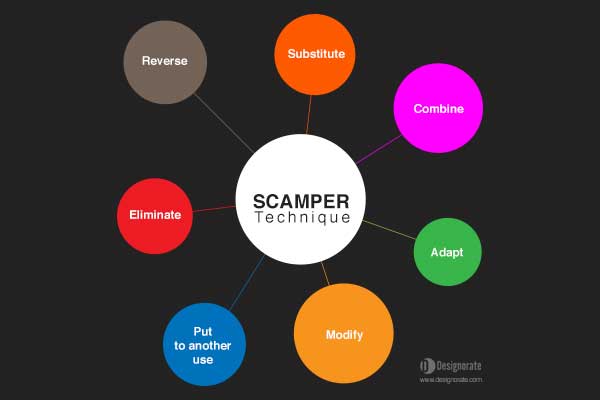
Finding solutions can also involve trying to identify the root causes of the problem to find practical solutions that eliminate the causes of consumer unsatisfied experiences such as:
5 Whys: In this effective method, we ask the “why” question five times until we reach the root cause of the problem.
Fishbone Diagram: In this diagram, we explore the causes of the problem based on six main perspectives: people, methods, machines, materials, measurements, and the environment.
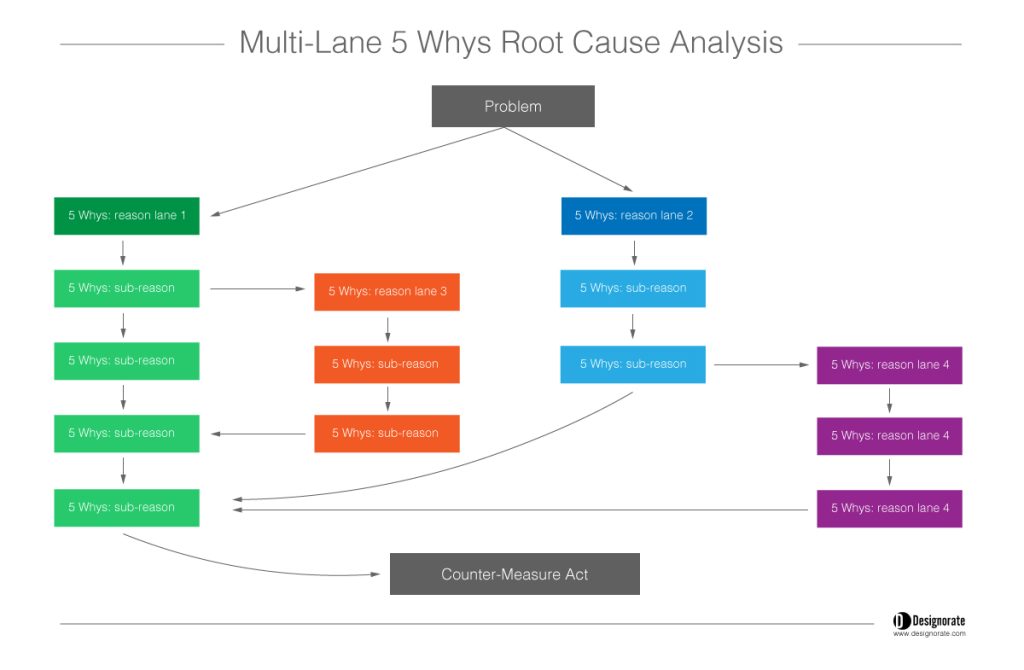
Stage 3: Implement
After understanding the customer experience, the team should have a clear vision of the pain point that faces the customer and how to brainstorm how to overcome it by building an action plan. This plan should address these issues faced by the customer with solutions. The action plan should clearly define the timeframe and budget required to improve the product or the service to enhance customer satisfaction. The plan should include the stakeholders working n implementing these changes.
After implementing these changes, another customer journey map should be created to evaluate customer satisfaction with the new changes and if further improvement is needed. Note that the design of a product or service is an iterative process; there are always ways to improve it as the customer experience change due to the changes in the culture, education, and new technologies.
The above example went through one customer journey map template. Yet, there are varied templates and shapes of the customer journey maps depending on the visualized information, the team’s creativity, and the tool used to create the map.
In sum, customer journey mapping is a powerful tool for the company to understand their customer experience and work to improve it in the next versions of the product or service. It allows companies to collect data about the consumer and organize it in a visual form that all the stakeholders in the project can easily track. As a result of this understanding, the team can build an action plan to improve the consumer experience, which will positively reflect on the project’s success in the market.
Note: This article was first published on the 15th May 2017.

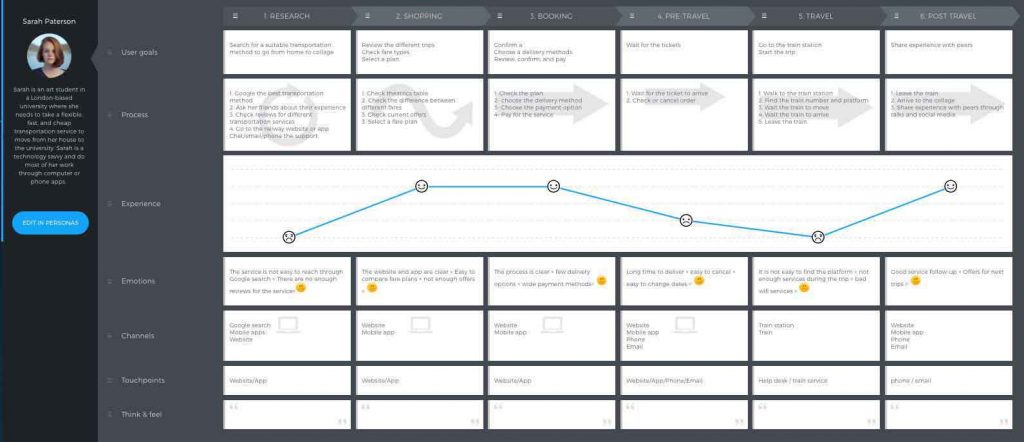





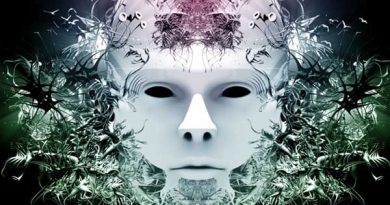
I would create the personas after the data collection. In that way you can analyse the data, detect characteristics and specific behaviours of the various customers and based on that create more realistic personas.
regards, roeland
Thanks for sharing your ideas, this is clever idea, having daft persona will surely help the researchers to know what they are looking for and the questions they need to ask.